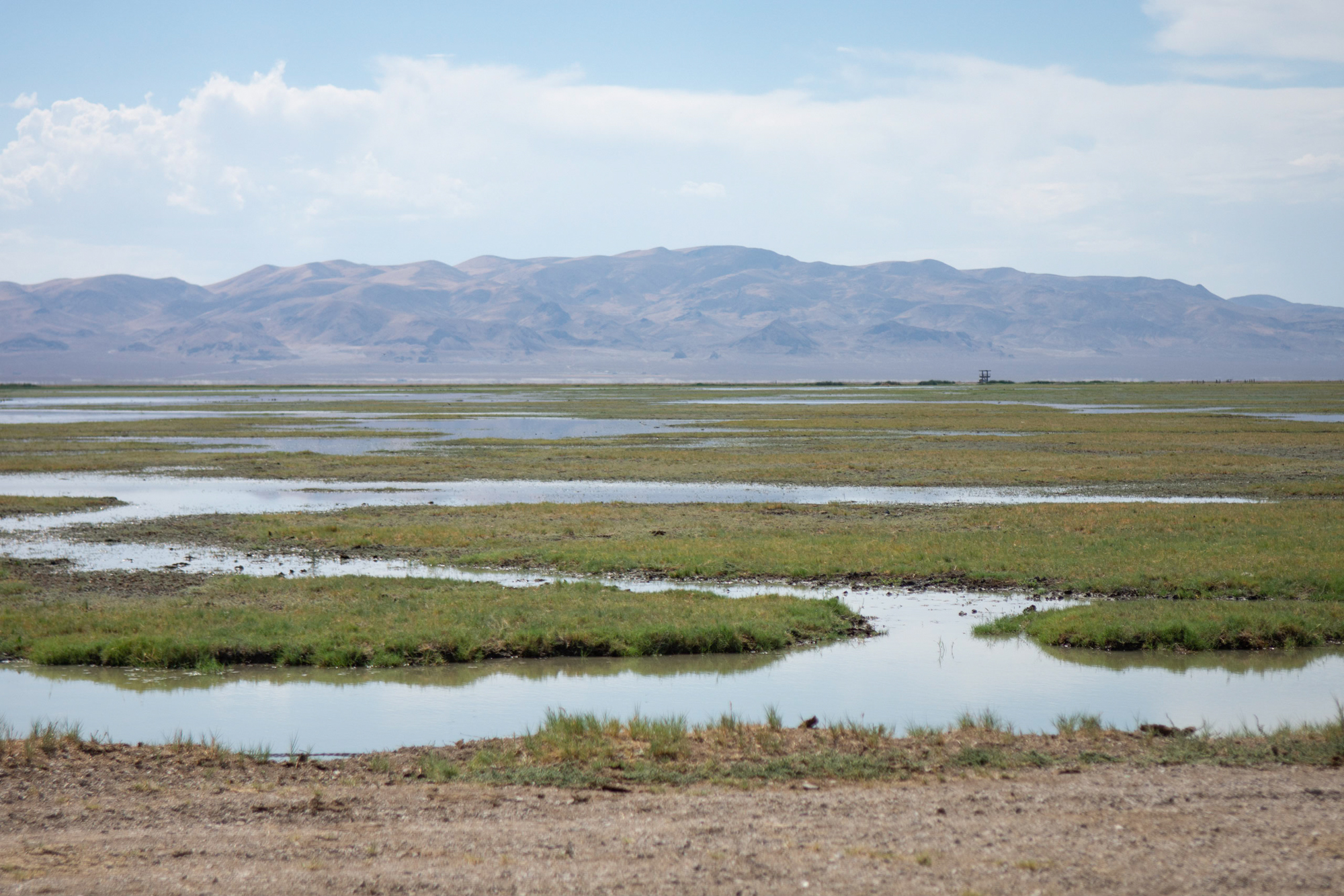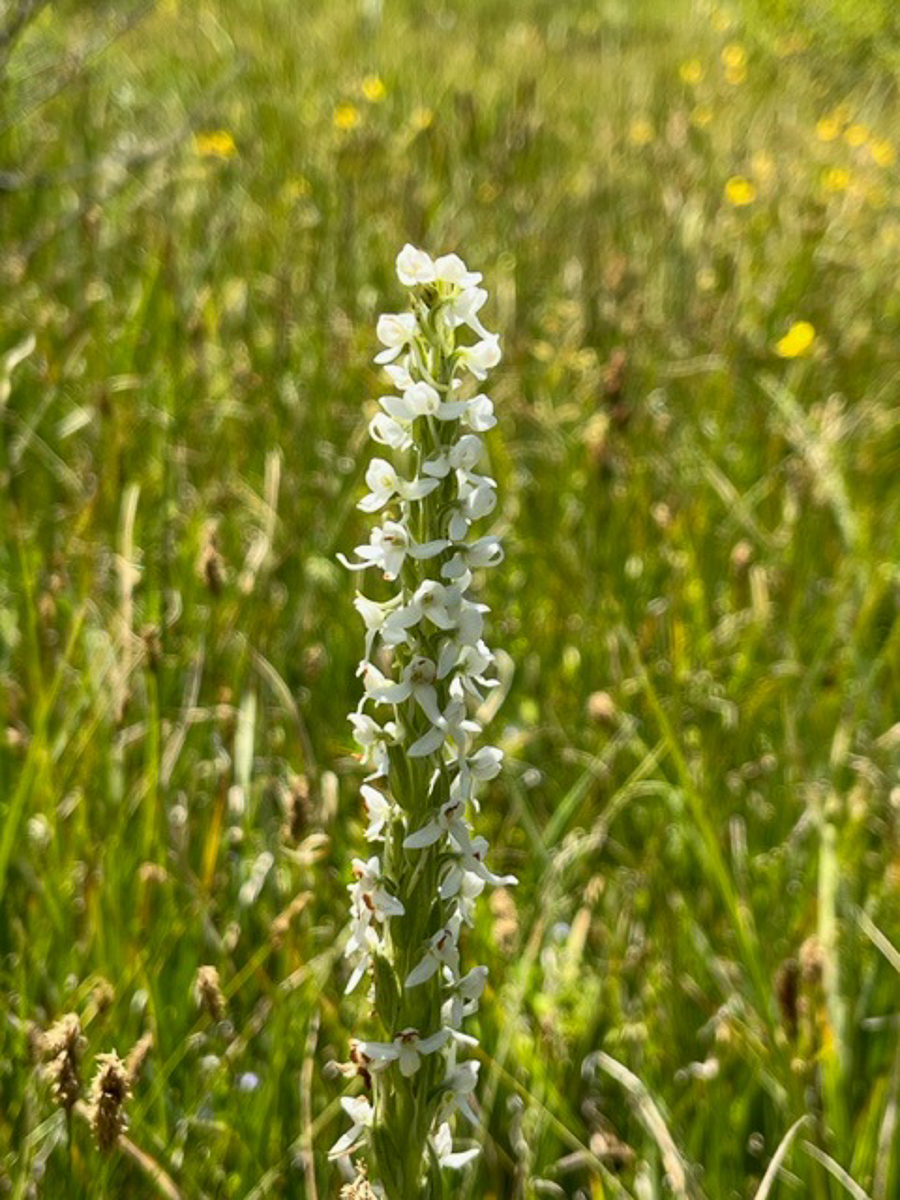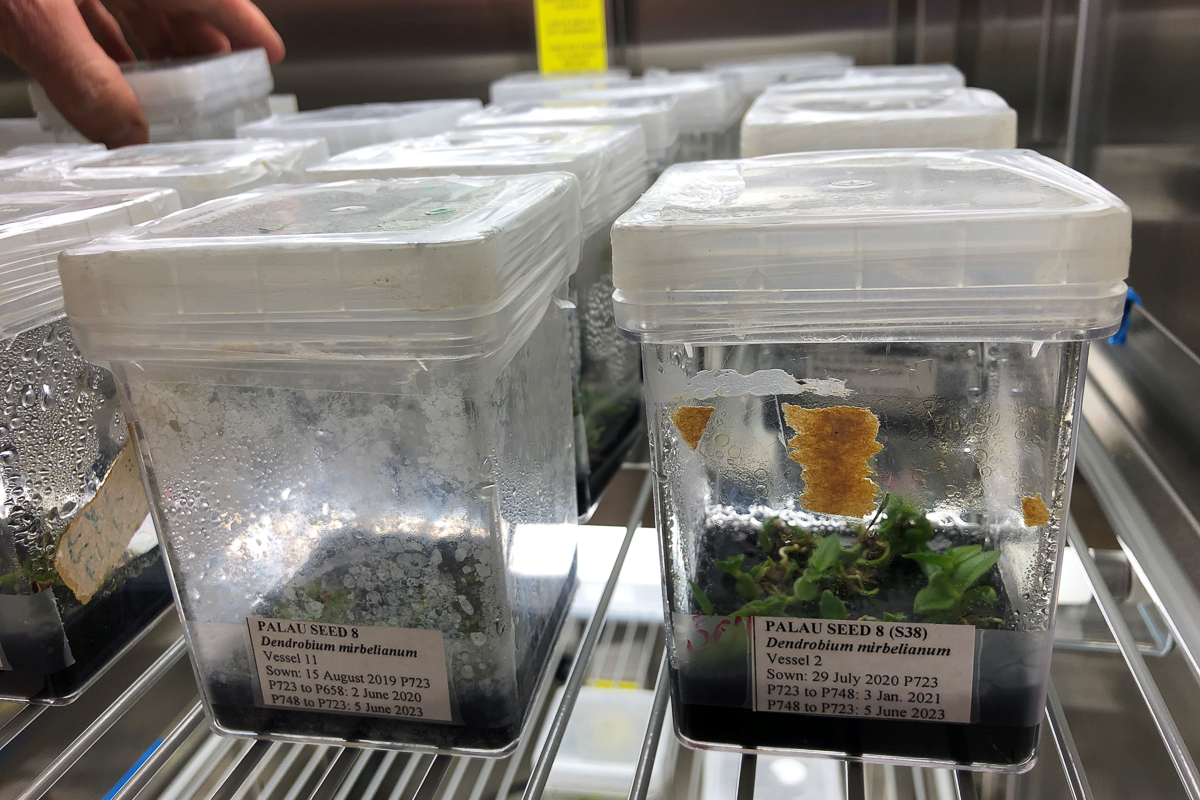Indy Environment: Inside two Nevada scientists’ quest to conserve, track desert orchids

Good morning, and welcome to the Indy Environment newsletter. I'm Amy Alonzo, the environment reporter for The Indy.
I recently learned that orchids grow in Nevada.
Not just in floral displays at grocery stores, or in office lobbies, but, quite literally throughout the state. And — wait for it — the Silver State has more native orchids than Hawaii.
If you’re anything like me, you’ve likely never identified an orchid while hiking in Nevada, let alone multiple different kinds. You might, like me, have one in a pot on the windowsill, where it refuses to bloom.
Orchids grow in the wild better than they grow on my windowsill, and a team of Nevada scientists are digging deep to get to the root of how the water-loving plants survive in the driest state in the country.
As always, we want to hear from readers. Let us know what you’re seeing on the ground and how policies are affecting you. Email tips to me at [email protected].
To get this newsletter in your inbox, subscribe here.


There aren’t a lot of similarities between Nevada and a rainforest.
Except, surprisingly, that more than a dozen species of orchids — the delicate, flashy flowers typically thought to grow in sweltering jungles — grow in pockets across an extensive portion of the nation’s driest state.
But for decades, orchids have largely gone unstudied in Nevada.
Species have been identified and growing locations have been noted, but “you can know the name of something and not know a thing about it,” said Connie Taylor, program administrator at the Desert Research Institute’s division of earth and ecosystem sciences.
Taylor, along with fellow DRI scientist Amy Langston, wants to change that.
Threats to the water-dependent flowers are developing at a rapid pace as wetlands decline and temperatures warm, she said. Taylor also worries skyrocketing lithium exploration and recent changes to federal wetlands protections could harm the plants.
Changes are coming faster than the plants can evolve or migrate, “and when things change, there are more ways for them to go wrong than there are for them to go right,” Taylor said.
Learning more about the plants and how they’ve managed to thrive in Nevada could help them survive despite environmental challenges, she said.
“If you know how an orchid can survive in Nevada, you will know a lot about that place,” she said. “We all need a healthy environment — orchids and people alike.”
No known groups monitoring Nevada’s orchids
With roughly 30,000 known varieties, orchids grow on every continent save Antarctica. More than half of North America’s approximately 250 native orchid species are considered endangered or threatened.
There are 14 different orchids that grow in Nevada — or 13, depending on the source. Either way, it’s a surprisingly high number for the driest state in the union, considering Hawaii claims just three native orchids.
Sporting common names such as “Broadlipped Twayblade” and “The Bog Candle,” seven of Nevada’s species have been observed in Clark County’s Red Rock, Kyle and Lee canyons and eight different species have been reported in Elko County.
Spiranthes infernalis — Ash Meadows Lady’s Tresses — is endemic to Nevada, found only at Ash Meadows National Wildlife Refuge, a haven of perennial seeps, springs and wetlands just outside Death Valley National Park, the hottest place on Earth and the driest location in North America.
Orchids spend most of their lives underground, waiting for perfect conditions before briefly blooming, making them hard to purposefully locate for research, Taylor said.
“Orchids, since they are fed by fungi, can decide to hang out underground for potentially years. And then they might decide to flower and send up a few leaves and a flower, then disappear for a few more years,” she said. “You don’t know what you’ll find.”
Taylor searched for a local orchid expert to help guide her and Langston in their effort to learn more about Nevada’s orchids, but she couldn’t find one. So, to start their research, the DRI scientists traveled 2,000 miles to visit Larry Zettler at the Smithsonian’s North American Orchid Conservation Center, where orchid seeds are propagated and saved for research.
When Taylor and Langston arrived, Zettler told them nobody from Nevada had ever reached out to the center.
“If there’s a group that works on orchid conservation in Nevada, I’m not aware of any,” said Zettler, a professor and director of the Orchid Recovery Program at Illinois College and a research associate at the Chicago Botanic Garden.

An orchid found nowhere else in the world
Orchid seeds are tiny, like specks of dust. Because they’re so small, there’s no food contained within the seed, and they rely on fungi, which breaks down nutrients in the soil, to help them grow.
“Without the fungus, the seed will never have food to germinate because they’re so teeny — just these little, tiny specks of dust, smaller than a banana seed,” Taylor said.
That fungus, in turn, is moisture dependent.
Wetlands cover less than 5 percent of Nevada but provide habitat for at least 75 percent of its species, including three dozen of the state’s threatened and endangered plants and animals. One of these is the critically imperiled Ash Meadows Lady’s Tresses, the orchid found only in Ash Meadows. With vertical rows of creamy, tubular flowers, they are threatened by invasive plants, illegal collection and groundwater depletion.
Wetlands used to cover more of the state, but more than half of them have been lost to development and other uses. In a state that only receives around 9 inches of rain per year, it’s a substantial loss.
“Plants don’t have the luxury of moving with the speed of change at which things are happening,” Zettler said.
Compounding the issue is that the state has no formal or informal goal regarding wetland loss or gain and does not regulate or promote wetland or stream buffer protections, according to the Nevada Division of Natural Heritage. In addition, the state relies on the Army Corps of Engineers for all wetland mitigation, does not engage in any formal mapping or monitoring, and does not have an inventory database.
The state’s main venue for regulating wetland impacts is established through the 1972 Clean Water Act.
But in May, a U.S. Supreme Court decision all but eliminated protections for many wetlands that were previously protected by the Clean Water Act. The court’s decision determined that the Clean Water Act only pertains to water that is relatively permanent, standing or continuously flowing, such as streams, oceans, rivers and lakes.
The ruling “gutted protections for most of the nation’s wetlands,” according to the environmental nonprofit Center for Western Priorities, prompting more than 100 House Democrats to introduce the Clean Water Act of 2023 to restore wetland protections.
Underground impacts to Nevada’s waterways, and therefore its orchids, also concern Taylor.
There are more than 21,000 active lithium claims in Nevada. Lithium is a soft mineral at the forefront of the green energy movement, and in 2022, global consumption of lithium increased 41 percent over the year prior to 134,000 tons. A whopping 12 million tons of lithium resources have been identified in the United States — much of it in Nevada.
This summer, the Amargosa Conservancy and the Center for Biological Diversity filed a lawsuit against the Bureau of Land Management for approving an exploratory project proposed by Rover Metals outside Ash Meadows, a water-filled refuge that provides habitat for at least 25 plants and animals found nowhere else in the world — including the Ash Meadow Lady’s Tresses.
Rover Metals intended to drill up to 30 boreholes near the boundary of the refuge, with some between 250 and 300 feet deep — some as close as a half mile from Ash Meadows’ Fairbanks Spring.
Most lithium exploration drills deep into areas such as dry lakebeds or alluvial fans and has minimal impact on wetlands, according to Rob Ghiglieri, administrator of the state’s Division of Minerals. But with the boreholes of the proposed project near Ash Meadows going just a few hundred feet below the surface so close to the springs, there could be potential negative impacts, he said.
And a warming climate magnifies challenges facing Nevada’s flora.
Reno and Las Vegas are the two fastest-warming cities in the country — Reno’s average temperature is nearly 8 degrees warmer than it was in 1980, and Las Vegas’ is nearly 6 degrees warmer — and the entire state is several degrees warmer than it once was. These temperature increases stress plants that have already adapted to the state’s heat and aridity.
“These particular plants are not like sagebrush and rabbitbrush that have adapted to really dry conditions,” Taylor said. “You’ve got to take care of this stuff or it will be gone.”
Here’s what else I’m watching this week:
The Guardian reports on a loophole that lets regulators forgive pollution from wildfires when it comes to tracking air quality.
Oregon Public Broadcasting dives into potential future landscaping rules in California to mitigate wildfires.
My co-worker Gabby Birenbaum explains legislation that could simultaneously expand military use and conservation projects in Nevada.
Interesting reporting by Grist about some cities’ bans on leaf blowers — just in time for autumn.
Nevada will benefit from a $1.3 billion federal investment to increase renewable energy transmission, according to the Nevada Current.
